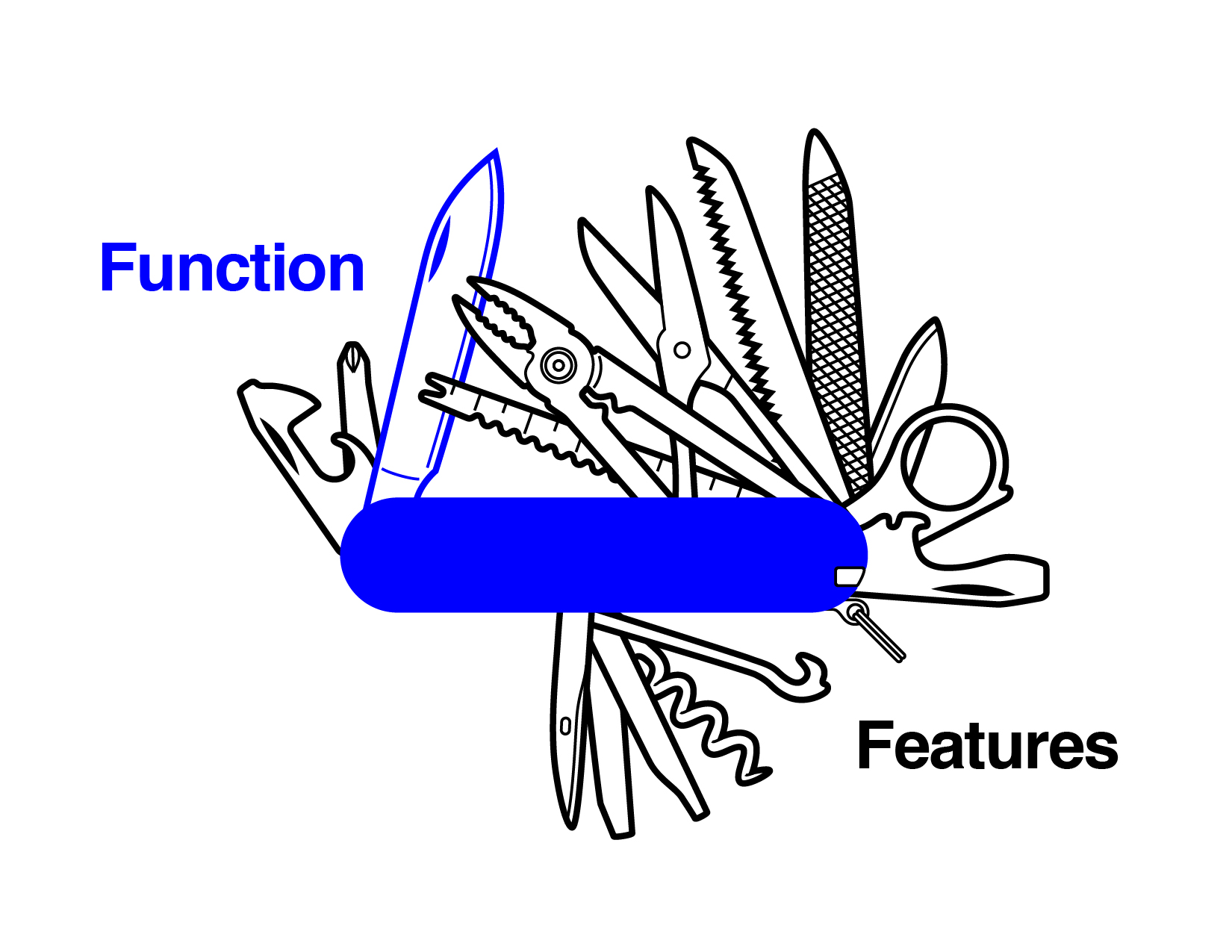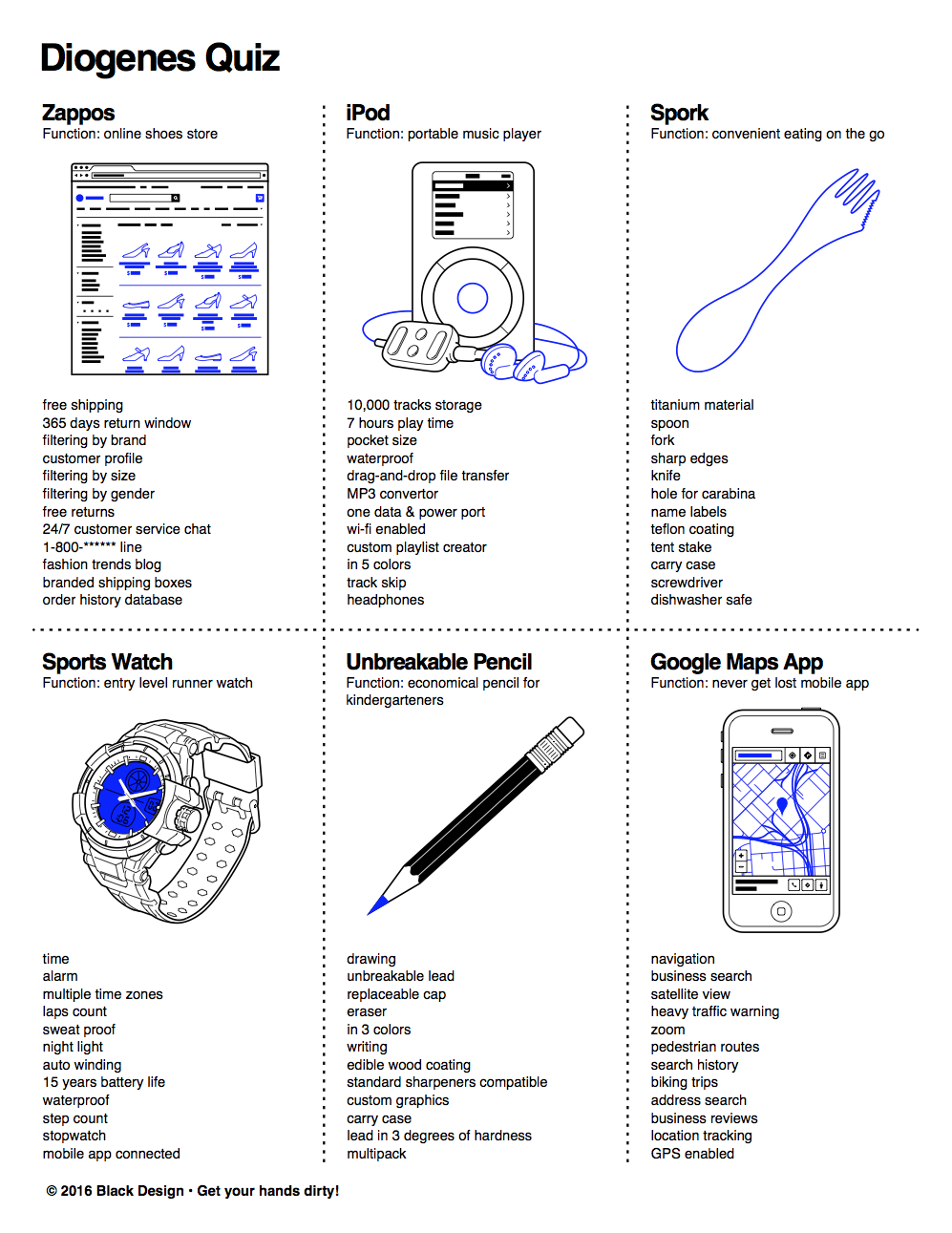Black Design
Get your hands dirty!MVP Spec Tool (Beta)
Tool for identification of product function and supportive features. Define your MVP character in less than 10 minutes.

A minimum viable product, or MVP, is the very first product of any business. The purpose of this product is to test demand. The launch of this product concludes a validation of a business opportunity. It is the milestone that transforms a project into a business. The market reaction to an MVP inspires you – the founder – to iterate or pivot.
Product versus Prototype
MVP stands for minimum viable product not for minimum viable prototype. A prototype, however sophisticated, is not a product. A prototype usually has a very narrow purpose, and there are often several parallel prototypes for a single product. For example, “look-like” and “work-like” prototypes together typically demonstrate one product concept, because the working technology, hacked from off-the-shelf parts or free templates, does not fit the anticipated form or user interaction. There are prototypes for user observations to validate needs and test solutions. There are prototypes for crowdsourced campaigns to showcase the anticipated product. There are pre-production prototypes. There are tangible prototypes to trigger intangible user experiences. There are intangible prototypes to illustrate possible use cases for physical products.
A minimum viable product is a real product. Real users and real customers will use it and pay for it. While founders might think of it as a prototype, users and customers will think of it as a finished product. Therefore, an MVP needs to be a complete story with a clear purpose, or function, and with just the right set of features to promote this function. Unlike with a prototype testing, you – the founder – will not be there to curate the experience.
Function versus Feature
A product is a manifestation of a function. A function is a purpose intended for a product. Without a function there would be no reason for a product to exist. Every product has one leading function. Having multiple functions in one product is confusing.
A feature is an attribute, a characteristic, a quality or a property of a function. A feature focuses attention on a product function. Too many features confuse an understanding of a product purpose. A feature war is like a price war. It is a downward spiralling business strategy that leads to a destruction of value.
The most common mistake technical founders make is falling in love with a feature, but thinking of it as a function. A light switch is a feature of a lamp. It is not the purpose, or function, of the lamp. An airbag is a feature of a car. It is not the purpose, or function, of a car. A product rating is a feature of an online store. It is not the purpose, or function, of an online store.
Minimum versus Maximum
If there was such a thing as a maximum viable product, what would it be like? The purpose of this product would be clear, because the positioning of the function would have been refined by many user testimonials. Just the right amount of features would enable the consumption via a unique user experience. The production would likely encompass proprietary technologies – from an authentic code to a custom-built assembly line. Social responsibility would be part of this maximum viable product design spec.
A minimum viable product is the most efficient way to deliver a function of a product to a market. An execution of such MVP has to be technologically feasible and economically viable for founders.
